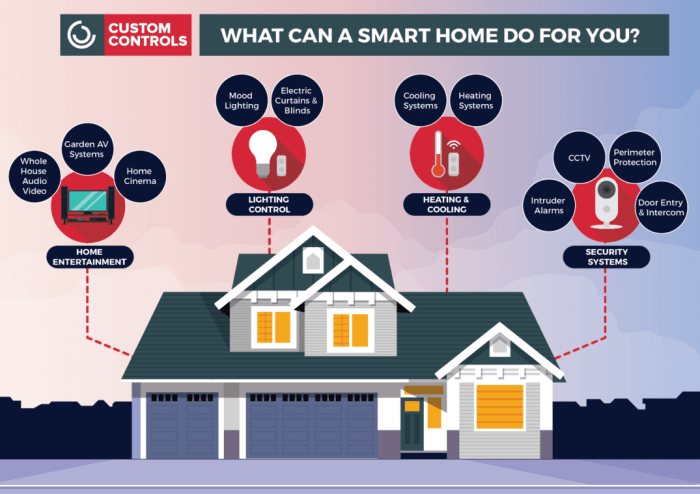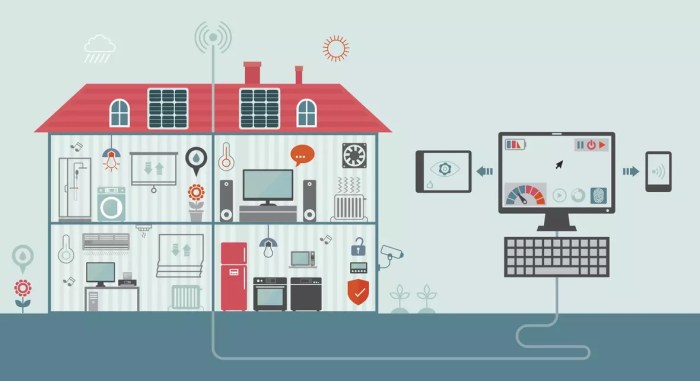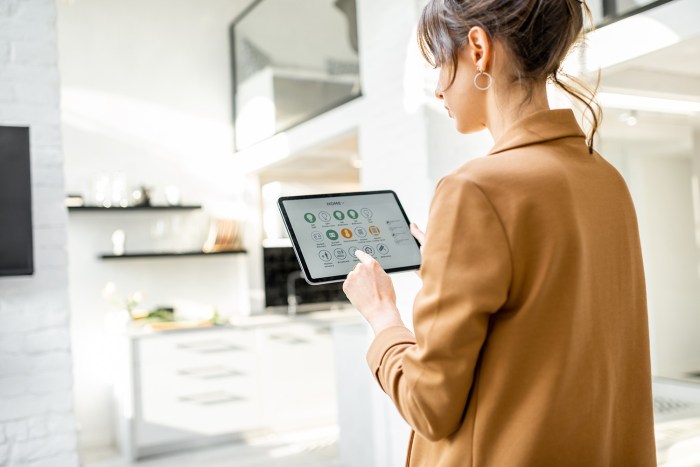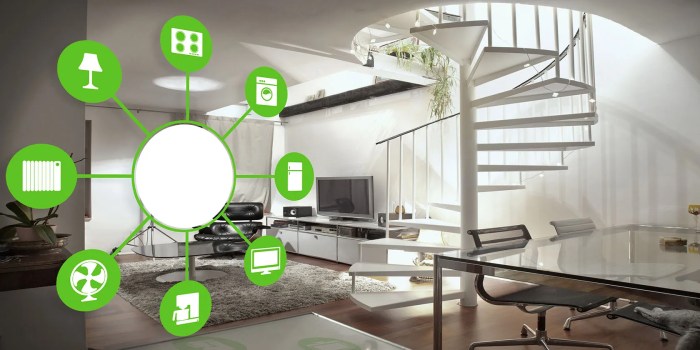In the realm of modern living, smart home systems have emerged as a beacon of convenience and efficiency. With the ability to automate various aspects of our homes, these systems offer a tantalizing blend of comfort, security, and energy savings.
However, before embarking on this technological journey, it is crucial to delve into the financial implications associated with smart home systems.
This comprehensive guide will shed light on the various cost components, installation expenses, subscription fees, and additional considerations that come into play when implementing a smart home system. By exploring these factors, we aim to provide a clear understanding of the financial investment required to transform your living space into a smart home oasis.
Smart Home System Cost Components

Smart home systems provide convenience, security, and energy efficiency, but their cost can vary depending on the components included. Understanding the typical components and their impact on the overall system cost is crucial for informed decision-making.
Common Smart Home System Components
A smart home system typically comprises various components that work together to automate and control different aspects of the home. These components include:
- Smart Speakers: These devices, like Amazon Echo or Google Home, allow voice control of smart home devices and access to various services.
- Smart Thermostats: These thermostats learn user preferences and adjust the home’s temperature accordingly, saving energy and improving comfort.
- Smart Lighting Systems: These systems enable remote control of lights, allowing users to adjust brightness, set schedules, and create customized lighting scenes.
- Security Cameras: Smart security cameras offer remote monitoring, motion detection, and recording capabilities, enhancing home security.
- Smart Door Locks: These locks allow users to lock and unlock their doors remotely, grant temporary access, and receive notifications of lock activity.
Impact of Number of Components on System Cost
The number of components included in a smart home system significantly impacts the overall system cost. Generally, the more components added, the higher the cost. This is because each component typically requires its own installation, setup, and ongoing maintenance.
Popular Smart Home System Brands and Component Costs
Several popular smart home system brands offer a range of components with varying costs. Here are some examples:
- Amazon: Amazon Echo devices start at around $50, smart thermostats range from $100 to $200, and smart lighting systems start at $50 per bulb.
- Google: Google Home devices start at around $50, Nest thermostats range from $100 to $250, and Nest security cameras start at $100.
- Apple: Apple HomePod devices start at around $300, HomeKit-compatible thermostats range from $150 to $300, and HomeKit-compatible lighting systems start at $50 per bulb.
Installation and Setup Costs

The installation and setup of a smart home system can vary in complexity and cost depending on the chosen system, the number of components, and the property’s layout. Understanding the available options and potential influencing factors can help homeowners make informed decisions and optimize their smart home investment.
There are three main types of installation options for smart home systems:
- Do-It-Yourself (DIY): Homeowners with technical skills and experience can opt for a DIY approach, purchasing the system components and installing them independently. This option offers the potential for cost savings but requires careful planning, attention to detail, and a willingness to troubleshoot any issues that may arise.
- Professional Installation: For those who prefer a hassle-free experience, professional installation services are available. Trained technicians will handle the entire process, from system design and component selection to installation and configuration. This option typically comes at a higher cost but ensures a properly functioning system and peace of mind.
- Remote Assistance: Some smart home system providers offer remote assistance for installation and setup. This option combines the convenience of DIY with the expertise of a professional. Homeowners can handle the physical installation while receiving guidance and support from a remote technician via video call or chat.
The cost of installation and setup is influenced by several factors:
- Complexity of the System: More complex systems with numerous components and advanced features generally require more time and effort to install, resulting in higher costs.
- Number of Components: The number of smart devices and sensors being installed also affects the installation cost. A larger number of components means more time and resources are needed for setup and configuration.
- Location of the Property: The geographical location of the property can impact installation costs. Remote or hard-to-reach areas may require additional travel expenses or specialized equipment.
To reduce installation costs, homeowners can consider the following tips:
- Choose a DIY Approach: If you have the technical skills and time, opting for a DIY installation can save money. However, it’s essential to carefully research the system and follow the instructions accurately.
- Opt for a Modular System: Choosing a modular smart home system allows for gradual expansion. You can start with a basic setup and add more components over time, spreading the installation costs across multiple phases.
- Consider Professional Installation for Complex Systems: For complex systems or those requiring specialized knowledge, professional installation is recommended. This ensures proper setup and minimizes the risk of errors.
- Shop Around for Quotes: Get quotes from multiple installation providers to compare costs and services. This can help you find the best deal for your specific needs.
Monthly Subscription Fees

Many smart home systems require a monthly subscription fee to access certain features and services. These fees can vary depending on the provider, the level of service, and the number of devices connected.
Types of Subscription Fees
Common types of subscription fees associated with smart home systems include:
- Cloud Storage: This fee covers the cost of storing data generated by your smart home devices, such as video footage from security cameras or usage data from smart thermostats.
- Remote Access: This fee allows you to control your smart home system from anywhere with an internet connection, using a smartphone app or web interface.
- Security Monitoring Services: This fee covers the cost of monitoring your home for security breaches, such as break-ins or fires. Some providers also offer professional monitoring services, where a human operator will respond to security alerts and contact the appropriate authorities.
Factors Affecting Subscription Fees
The following factors can affect the cost of a smart home system subscription:
- Level of Service: The higher the level of service, the more features and functionality you will have access to. This can include things like increased cloud storage space, more remote access options, and more sophisticated security monitoring services.
- Number of Devices Connected: The more devices you connect to your smart home system, the higher your subscription fee may be. This is because more devices generate more data, which requires more storage space and processing power.
- Provider’s Pricing Structure: Different providers have different pricing structures for their subscription fees. Some providers offer a flat monthly fee, while others charge a per-device fee or a fee based on the level of service.
Comparison of Subscription Fees
The following table compares the subscription fees of different smart home system providers:
| Provider | Monthly Fee | Features Included |
|---|---|---|
| ADT | $29.99 | Cloud storage, remote access, security monitoring |
| SimpliSafe | $14.99 | Cloud storage, remote access, security monitoring |
| Ring | $10.00 | Cloud storage, remote access |
| Google Nest | $6.99 | Cloud storage, remote access |
Additional Considerations

Exploring further cost aspects of smart home systems involves contemplating potential maintenance and repair costs, the long-term cost of ownership, and the environmental impact.
Maintenance and Repairs
Smart home systems, like any technology, may require occasional maintenance or repairs. These costs can vary depending on the system’s complexity, the frequency of use, and the availability of warranty or service contracts.
- Regular maintenance tasks, such as software updates or cleaning sensors, can often be performed by the homeowner, keeping costs minimal.
- However, more complex repairs or hardware replacements may require the expertise of a professional technician, potentially resulting in higher expenses.
Long-term Cost of Ownership
When considering the cost of a smart home system, it’s essential to look beyond the initial purchase price. Factors like energy savings and potential resale value can significantly impact the long-term cost of ownership.
- Smart home systems often offer energy-saving features, such as automated lighting and temperature control, which can lead to lower utility bills over time.
- Additionally, a smart home system can enhance a property’s value, making it more appealing to potential buyers and potentially commanding a higher resale price.
Environmental Impact
The environmental impact of smart home systems is a growing consideration for homeowners. Smart systems can contribute to energy efficiency and reduced carbon emissions through features like smart thermostats and energy-efficient appliances.
- By optimizing energy usage, smart home systems can help reduce a household’s carbon footprint and contribute to a more sustainable lifestyle.
- Furthermore, some smart home systems incorporate renewable energy sources, such as solar panels or geothermal heating, further reducing environmental impact.
Last Word

In conclusion, the cost of a smart home system encompasses a multitude of factors, ranging from the initial investment in components and installation to ongoing subscription fees and maintenance expenses. While the upfront costs may seem daunting, it is essential to consider the long-term benefits, such as energy savings, enhanced security, and increased convenience.
By carefully evaluating your needs, researching available options, and planning for future expansion, you can create a smart home system that fits your budget and lifestyle.
FAQ Summary
Q: What are the typical components included in a smart home system?
A: Smart home systems typically comprise various components, such as smart speakers, thermostats, lighting systems, security cameras, and door locks, all of which contribute to the overall cost.
Q: How does the number of components affect the overall system cost?
A: The more components you incorporate into your smart home system, the higher the overall cost will be. This is because each component has its own associated cost, and the installation and setup process becomes more complex with an increased number of devices.
Q: Are there different types of installation options available for smart home systems?
A: Yes, there are three main types of installation options: DIY, professional installation, and remote assistance. DIY installation is the most cost-effective option, while professional installation offers the advantage of expert setup and troubleshooting. Remote assistance provides guidance and support for DIY installations.
Q: What factors influence installation costs for smart home systems?
A: Installation costs are influenced by several factors, including the complexity of the system, the number of components, and the location of the property. More complex systems and larger properties typically require higher installation costs.
Q: Are there any subscription fees associated with smart home systems?
A: Yes, some smart home systems come with subscription fees for cloud storage, remote access, and security monitoring services. These fees vary depending on the level of service, the number of devices connected, and the provider’s pricing structure.